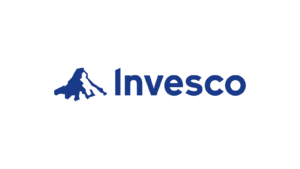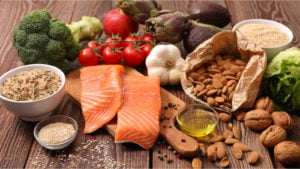InvestorPlace - Stock Market News, Stock Advice & Trading Tips
Things don’t get more necessary than food. However, interestingly enough, there’s a dearth of dedicated food exchange traded funds (ETFs). But lack of quantity shouldn’t be seen as lack of quality when it comes to the food ETFs.
To be honest, most food stocks aren’t glamorous. Not even close. That’s the rub with the consumer staples sector. But there is also utility in this segment and it’s applicable to a broad spectrum of investors. Staples stocks are usually less volatile than cyclical ones and their economically sensitive counterparts. Additionally, many food and beverage names have enviable dividend growth track records that offer yields in excess of the broader market.
That is to say, many food ETFs and their underlying components display quality traits and low volatility. Those are two distinct investment factors that are extremely advantageous when accessed under one umbrella, especially when the markets are going haywire.
So, with that in mind, here some food ETFs that conservative and income-seeking investors should consider:
- Invesco Dynamic Food & Beverage (NYSEARCA:PBJ)
- First Trust Nasdaq Food & Beverage (NASDAQ:FTXG)
- Invesco S&P SmallCap Consumer Staples (NASDAQ:PSCC)
- iShares Evolved U.S. Consumer Staples (BATS:IECS)
- Invesco DWA Consumer Staples Momentum (NASDAQ:PSL)
Food ETFs to Buy: Invesco Dynamic Food & Beverage (PBJ)
Expense ratio: 0.63% or $63 on a $10,000 investment
One way of looking at the Invesco Dynamic Food & Beverage fund is that it’s a consumer staples ETF without the consumer products and tobacco exposure. Currently, there’s some risk with that strategy because — in today’s Covid-19 world — makers of cleaning products, sanitizers and the like are the strength in the staples sector.
Still, PBJ stock has some perks for conservative investors, including a unique methodology that comes by way of the Dynamic Food & Beverage Intellidex Index. According to Invesco, that index evaluates “companies based on a variety of investment merit criteria, including: price momentum, earnings momentum, quality, management action, and value.”
That structure gives investors a less large-cap-centric lineup than is found on many traditional staples funds. In fact, most of the PBJ’s lineup is comprised of mid- and small-cap stocks. Additionally, the ETF’s 30 or so holdings have a weighted market value of $23.38 billion, which is well below the comparable metric old school staples funds.
Finally, another interesting fact is that over 22% of PBS’s holdings are classified as growth stocks, which brings some adventure to staples investing. This pick of the food ETFs has a dividend yield of 1.12%.
First Trust Nasdaq Food & Beverage (FTXG)
Expense ratio: 0.60%
The FTXG stock is another interesting approach to what may be seen as a bland corner of the market. The ETF, which is relatively small despite coming to market in September 2016, follows the Nasdaq US Smart Food & Beverage Index.
According to the fund’s factsheet, that benchmark is rooted in “three factors” — volatility measured by a stock’s 12-month price fluctuations, value gauged by cash flow to price and growth found through a stock’s average price appreciation over the trailing three to 12 months.
FXTG’s 30 holdings are weighted based on how they score across those three criteria. The result is a portfolio with a median market capitalization of $19.55 billion.
That gives the fund a growth and mid-cap feel. Notably, the cooking materials recycling provider Darling Ingredients (NYSE:DAR) and nutritional products maker Medifast (NYSE:MED) — a name with impressive shareholder yield traits — also account for over 19% of the ETF’s roster. With holdings like that, FTXG is certainly one of the more attractive food ETFs.
Invesco S&P SmallCap Consumer Staples (PSCC)

Source: Shutterstock
Expense ratio: 0.29% per year
Next on my list of food ETFs is the Invesco S&P SmallCap Consumer Staples. PSCC isn’t a dedicated food ETF, but the lone small-cap staples fund has ample food exposure. Approximately two-thirds of its 27-stock lineup are considered food equities.
Why is PSCC stock worth a near-term look? Because small caps are going at hot paces, a trend that started in late in 2020 and is extending into 2021. This fund confirms as much, with a year-to-date (YTD) gain of 11.24% according to the fund’s performance chart. While that just trails the S&P SmallCap 600 Index, the staples fund is typically less volatile than broader smaller stock benchmarks.
And just because PSCC is a staples fund doesn’t mean it’s boring or sacrifices growth exposure. Nearly a third of its holdings are classified as growth stocks. Moreover, its return on equity of 18.34% compares favorably with many broader small-cap funds.
iShares Evolved U.S. Consumer Staples (IECS)

Source: Shutterstock
Expense ratio: 0.18% per year
The iShares Evolved U.S. Consumer Staples is an actively managed fund, so its food and beverage exposure can be fluid. And there are some advantages in that “evolved” methodology. For example, the ETF includes consumer cyclical names — such as McDonald’s (NYSE:MCD) and Starbucks (NASDAQ:SBUX) — which can refresh the often staid complexion of traditional staples ETFs.
Moreover, there’s tremendous dividend growth potential in this fund compared to other food ETFs. Companies like Coca-Cola (NYSE:KO), Procter & Gamble (NYSE:PG) and PepsiCo (NASDAQ:PEP) combine for nearly 30% of the holdings roster. IECS stock also has a yield of 2.09%, which is decent these days.
What investors get with IECS is a fresher view on the staples sector with more than adequate food exposure, along with the benefits of a reasonable fee relative to many actively managed sector funds.
Invesco DWA Consumer Staples Momentum (PSL)

Source: Shutterstock
Expense ratio: 0.60% per year
Last on my list of food ETFs is the Invesco DWA Consumer Staples Momentum fund. As the name implies, PSL is a staples fund, not an exchange traded fund dedicated to food. However, the Invesco fund features a decent amount of food and beverage exposure with more than a dozen of its 39 components being pure play food and drink names.
PSL stock shares some similarities with the aforementioned IECS in that it’s framed as a staples ETF, but all of its holdings don’t hail from that sector. While staples equities command about 70% of its roster, the fund allocates almost 21% of its weight to consumer discretionary stocks. On top of that, four other sectors make up the remainder of the lineup.
A prime advantage of PSL is its relative strength methodology, which offers potential for out-performance. Over the past one year, the ETF is up nearly 20% compared to just 4.38% for the S&P 500 Consumer Staples Index.
On the date of publication, Todd Shriber did not have (either directly or indirectly) any positions in any of the securities mentioned in this article.
Todd Shriber has been an InvestorPlace contributor since 2014.
The post 5 Food ETFs That Offer More Upside Than Meets the Eye appeared first on InvestorPlace.
The views and opinions expressed herein are the views and opinions of the author and do not necessarily reflect those of Nasdaq, Inc.




